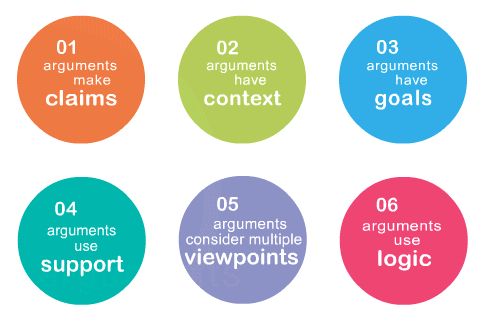A Review of i-cite and i-claim
James P. Purdy
Students as Researchers [1 2 3 4]
Not only does the i-claim CD present students as having useful experience with arguments, but it begins to more faithfully represent the processes involved in composing arguments. As a multimedia CD, i-claim goes some way to representing writing an argument in a less linear and more complex way. That is, rather than offering a series of linear steps to follow for writing an argument, Clauss organizes the CD around the functions of an argument, what an argument does: "Arguments make claims. They come from a specific context. They are driven by clear goals. They use support carefully. They consider multiple viewpoints. And they use logic" ("How i-claim works"; see figure 1). The CD offers a tutorial for each function. This approach redresses one of the limitations of print instructional texts identified by Rose (1981). What i-claim offers is not a step-by-step procedure for composing an argument but instead is a networked exploration into the functions of arguments. Such an approach may not meet instructors' expectations for a text that provides assignments around which they can structure a course. The CD does provide assignment prompts, but tutorials are not driven by the production of a particular textual product.
Figure 1: i-claim's Tutorials


